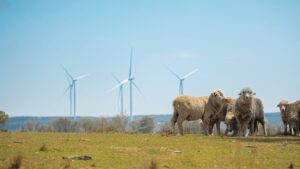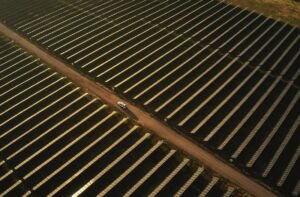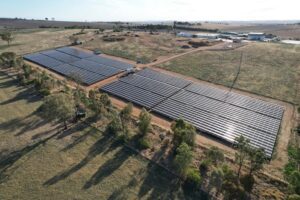There’s a lot of discussion and political jostling around energy options, decarbonisation, low-carbon or zero-carbon transition.
Looking at the options, let’s begin with today’s dominant player, conventional coal. It’s fate is easy to summarise, we burn it now in old, outdated power stations, but it no longer has a social licence and banks aren’t lining up to finance it.
Conventional gas is mooted by energy industry pundits and their bosses as the clean green option for our energy future, all the while ignoring fugitive emissions and not actually installing anything significant due to lower than forecast demand increases on the national electricity grid and the huge price uncertainty and volatility that comes with the fuel. This uncertainty is underpinned by the imminent linking of Australia to world markets and resultant export price parity. Will gas be cheap as in the US where the shale gas revolution has dropped prices, or will it be expensive like the Asian spot price or UK price, and will it trend towards parity with oil which itself is steaming towards $200 a barrel? (We don’t run our current electricity sector on diesel so why would we run it on gas at diesel prices?)
Nuclear was not an option for Australia even prior to Fukushima. As second generation nuclear plants have a bad name and are basically off limits in any OECD country, the industry has come up with third generation plants, but these have so far proved impossible to get built. Not one is operating and the flagship plant, by the world’s biggest nuclear builder Areva, is still under construction. Its construction time has more than doubled to 10 years and its costs have more than tripled over original estimates. This plant in Finland is not expected to be finished for at least another two-to-four years, if ever.
With that in mind the nuclear proponents have leapfrogged their own suggestion of going third generation and now push fourth generation plant. Great on the drawing board, deep in a government-sponsored lab in the middle of nowhere US, and sounds great, but no one is selling one, which is telling – not GE, not Toshiba, not Westinghouse, not Areva. Just in case you didn’t get that, you can’t buy one at all, anywhere, period!
Finally, when carbon is in the discussion and the coal and gas spruikers can’t convince us with what’s available off the shelf, their public relations departments reel out clean coal and clean gas with CCS. The problem here is that they don’t exist. The spruikers talk about each component being demonstrated in the laboratory, but show us the plants? They can’t.
Their proposed future with both (non-existent) clean gas with CCS and clean coal with CCS is designed not only to justify the status quo of burning fossil fuels, leading to unhealthy local pollution and dangerous climate change, but to slow the impetus for installing new renewable energy infrastructure, commercially available and off the shelf today.
Solar photovoltaic is going gangbusters and has (what they would call) the unfair advantage of competing in the retail market, which no other significant energy source on the table can do. And wind is on the cusp of competitiveness with new conventional coal and gas plants and is much cheaper than any futuristic (unproven) advanced or clean designs.
Now, given that the coal, gas and nuclear proponents always want to talk about the technology that they’re not selling (clean gas and coal with CCS, fourth gen Nuclear), then for an apples-with-apples comparison we’ll have to skip over today’s rooftop solar PV, which has halved in price over the last two years, or wind power, which is now competitive with gas in many markets around the world, and talk about the renewable options that are still in the lab (or in more advanced stages of commercialisation) for our energy future.
Well, for starters the roof of my house can host 18kW of solar panels which, at today’s best efficiency of 20 per cent, would generate 23MWh a year.
But in the (futuristic) world where they tell us CCS could be a reality, multi-layer rooftop solar would be delivering 40 per cent efficiency; meaning my roof would generate 46MWh a year and have awesome low light (cloud cover) performance, meaning I’d get more than enough power for my all electric house directly on winter days and annually send out 35MWh of electricity out from my property to be used by commerce or industry.
And of course I’d have a battery bank so I could have effective self sufficiency, which would allow me to ride through any high price periods on the electricity grid, like at night when the sun isn’t shining.
Nissan says batteries will halve in price for its 2015 electric vehicles. But let’s not stop with a 2015 prediction; CCS and 4th generation nuclear proponents expect us to wait until 2030 for their very nascent offerings. The battery prediction in line with research and development that is going on in the lab at present is that batteries will be four times the density and a quarter of the cost.
This means that a modern efficient home will be able to get a 50kWh battery bank to ride itself through the worst of winter for $6250, which is much cheaper than the $13,000 that every household in Australia is expected to pay on their electricity bills for upgrades to transmission and distribution infrastructure over the current five-year period.
So if we’re going to talk about futuristic clean coal or clean gas with CCS as an excuse to hang on to hope for today’s beloved dirty coal and gas sectors, then we have to talk about solar technology that’s 40 per cent if not 60 per cent efficient; batteries that are at least a quarter the cost and a quarter the size and that won’t just be for stationary applications but also eliminate the need for gas and oil in our vehicle fleets. Electric vehicles with amazing ranges will make driving an expensive fossil-fuel guzzlers look like an embarrassing proposition.
Clean coal and clean gas is a pipedream and typical of Australia’s irrational debate around carbon and energy – something that stems from the influence of the fossil fuel interests over government, through royalties and donations.
We are ready to roll with renewables today, no new capital should be spent locking in anymore fossil fuel burning. As we deploy our renewables they will continue to get cheaper. We’ll learn as we go and, most importantly, we’ll benefit from the learnings that are continuing to benefit the world’s most innovative successful economies.








